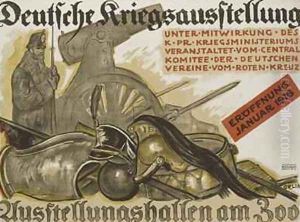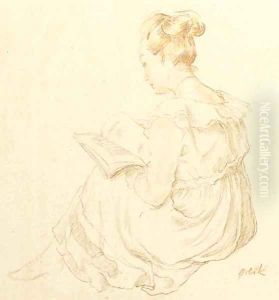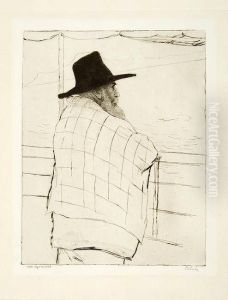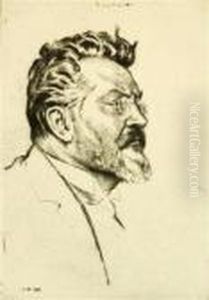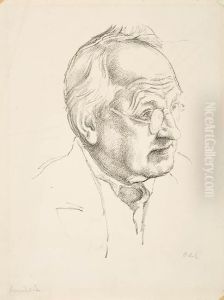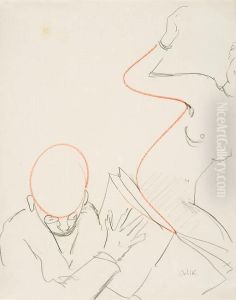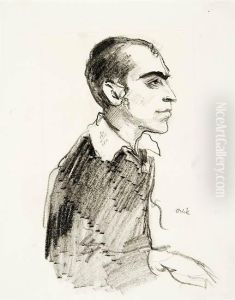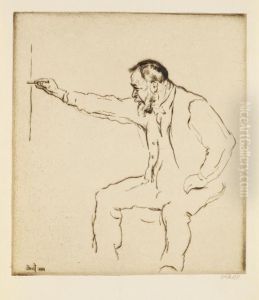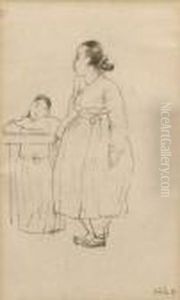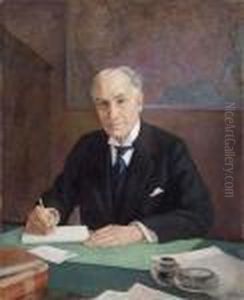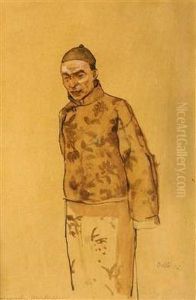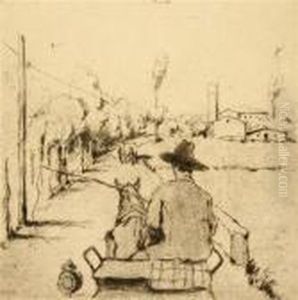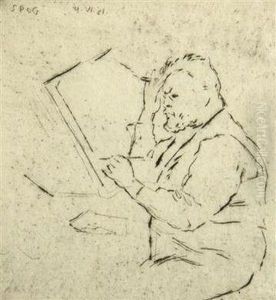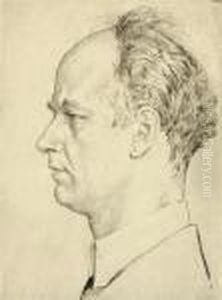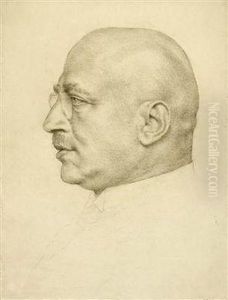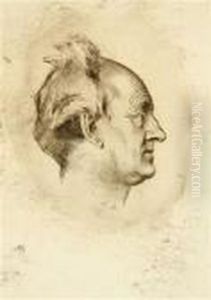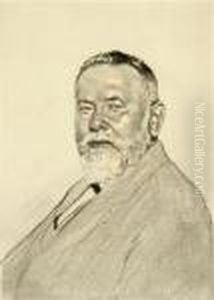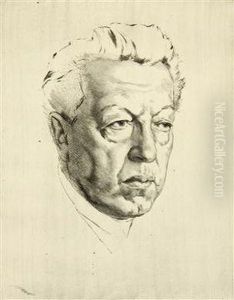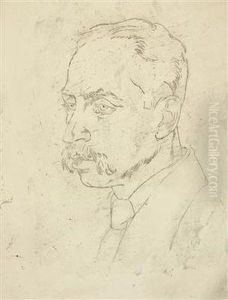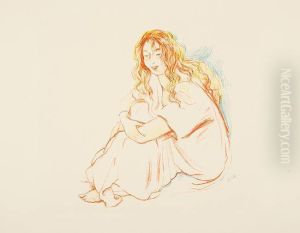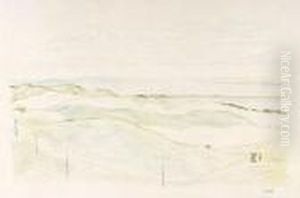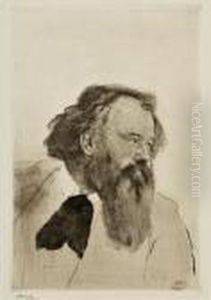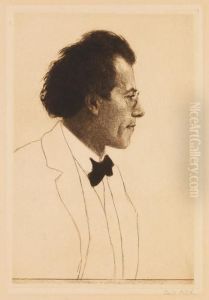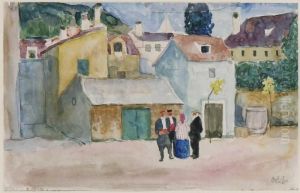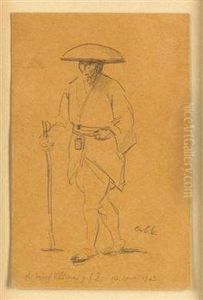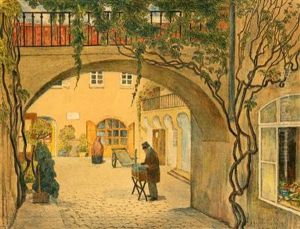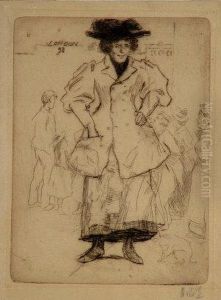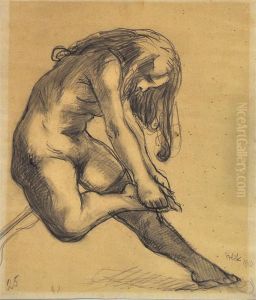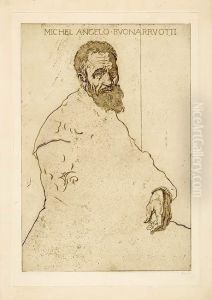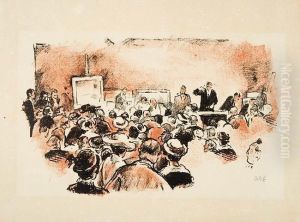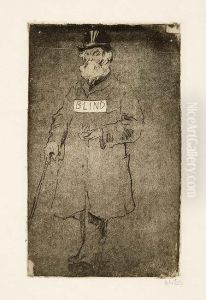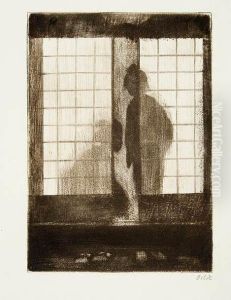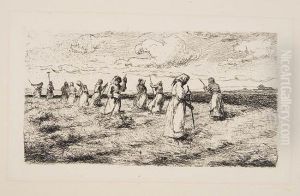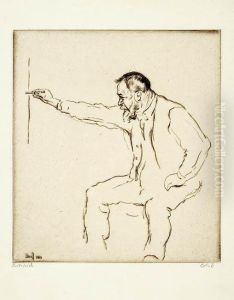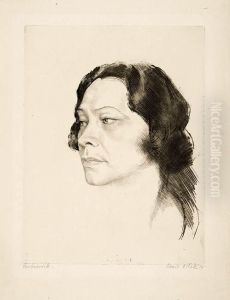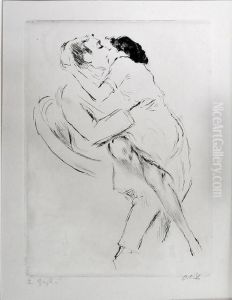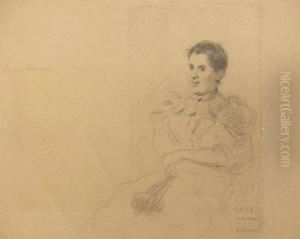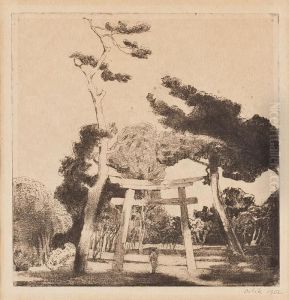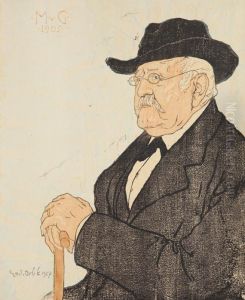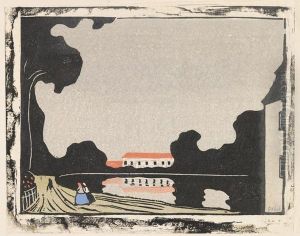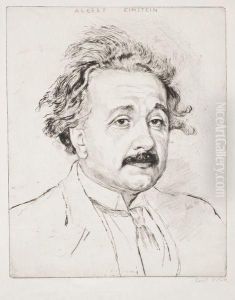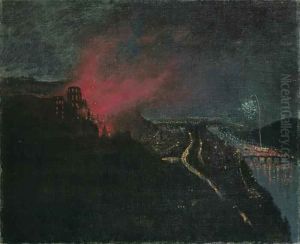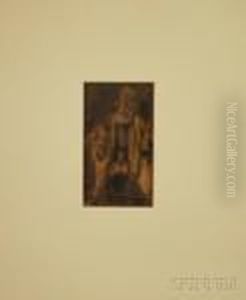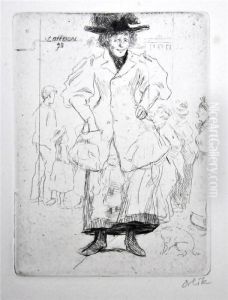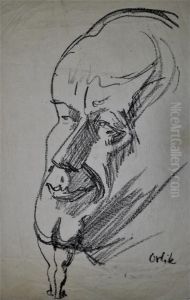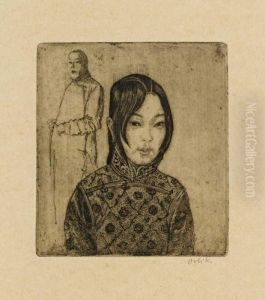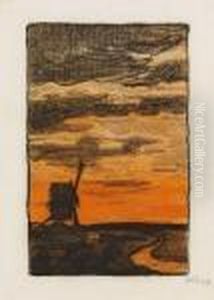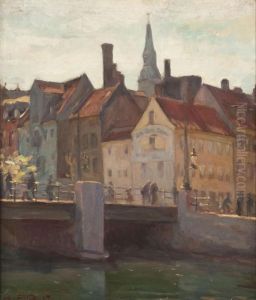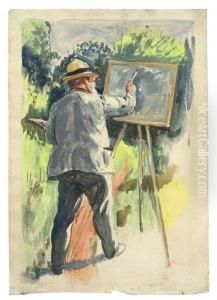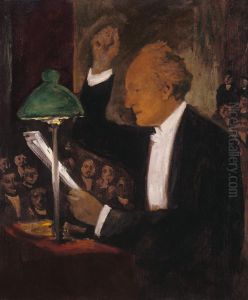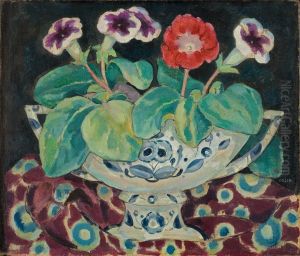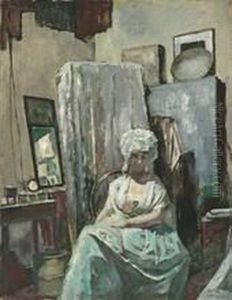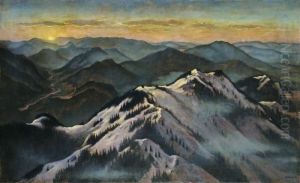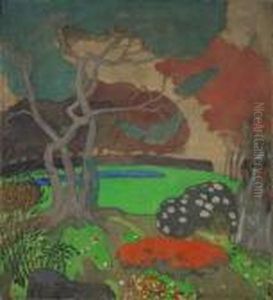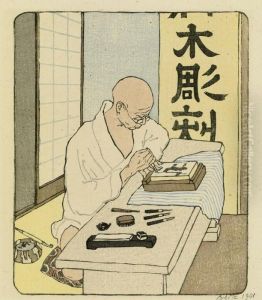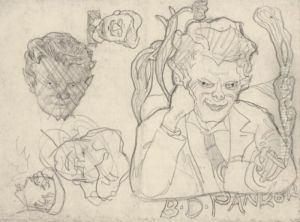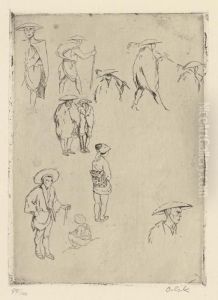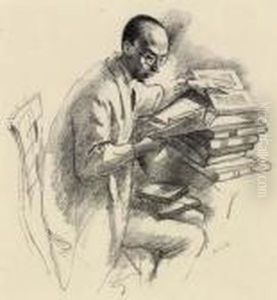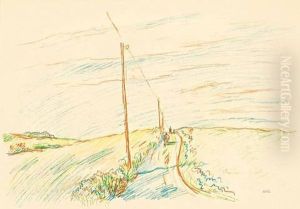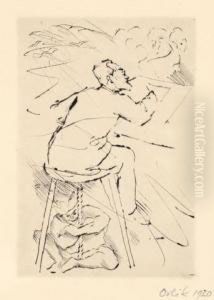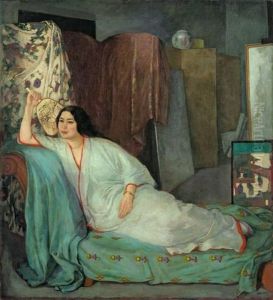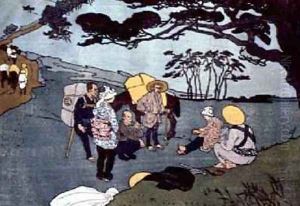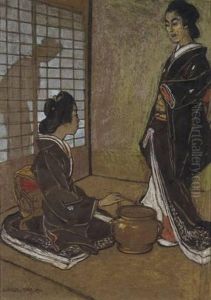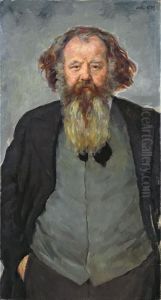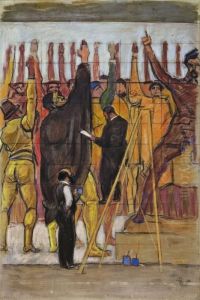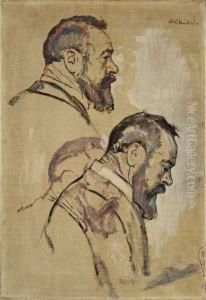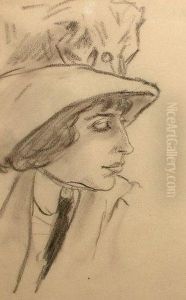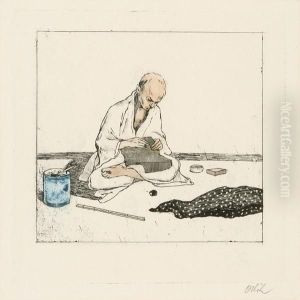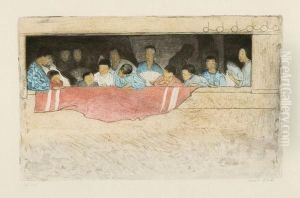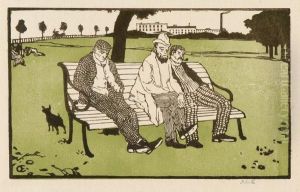Emil Orlik Paintings
Emil Orlik was a multifaceted Czech artist born on July 21, 1870, in Prague, then part of the Austro-Hungarian Empire. His versatile oeuvre spans various mediums, including painting, printmaking, and design, making him a significant figure in the early 20th-century European art scene. Orlik's early life was steeped in the rich cultural milieu of Prague, which laid the foundation for his diverse artistic explorations.
Educated at the Prague School of Industrial Arts before continuing his studies at the Munich Academy, Orlik was exposed to a wide range of artistic influences. His time in Munich, a city vibrant with new artistic movements, was particularly formative. Here, he immersed himself in the techniques of painting and printmaking, developing a keen interest in etching, lithography, and woodcutting. This period was crucial in shaping Orlik's distinctive style, which would later incorporate elements of Impressionism, Art Nouveau, and Japonism.
In the late 1890s, Emil Orlik's journey took a pivotal turn when he traveled to Japan. This trip was instrumental in refining his artistic vision; he studied traditional Japanese woodblock printing (ukiyo-e), which profoundly influenced his approach to printmaking. Upon his return to Europe, Orlik's work began to reflect this influence through the integration of Japanese aesthetics, particularly in his prints and portraits, which are characterized by their clean lines, attention to detail, and subtle use of color.
Throughout his career, Orlik was an active participant in the artistic communities of Berlin and Vienna, contributing to the vibrant cultural life of these cities. He taught at the Berlin School of Arts and Crafts, where he influenced a generation of artists, sharing his insights into the techniques of printmaking and his broad artistic vision. His work during this period includes a wide range of subjects, from portraits and landscapes to scenes of urban life and the theater, capturing the dynamism of the early 20th century.
Emil Orlik's legacy is that of a bridge between Eastern and Western art. Through his pioneering printmaking techniques and his incorporation of Japanese artistic principles into European art, Orlik played a crucial role in the cross-cultural exchange that would influence the development of modern art in Europe. He passed away on September 28, 1932, in Berlin, but his work continues to be celebrated for its innovation, technical skill, and the unique way it reflects the intersection of different cultural traditions.
